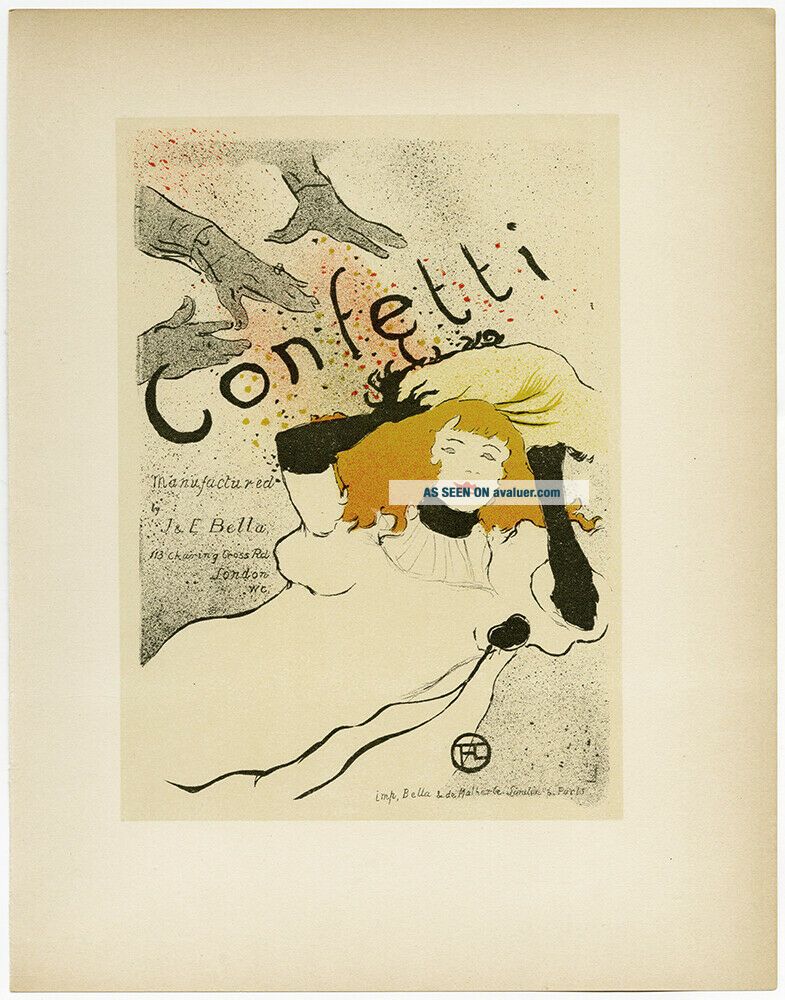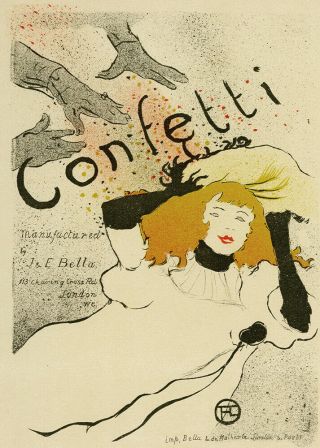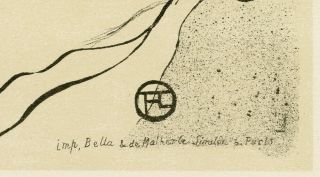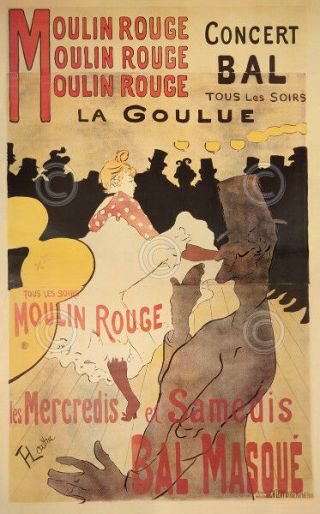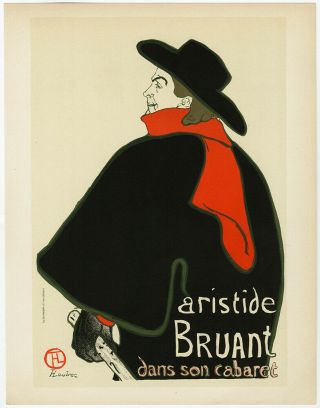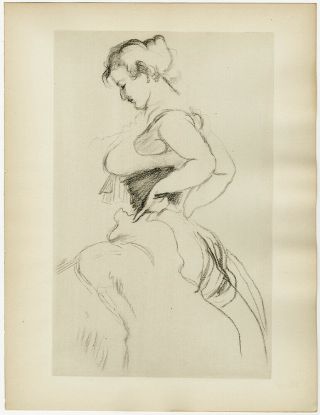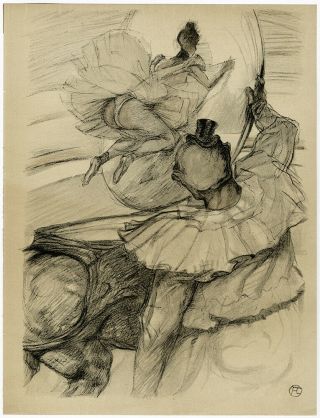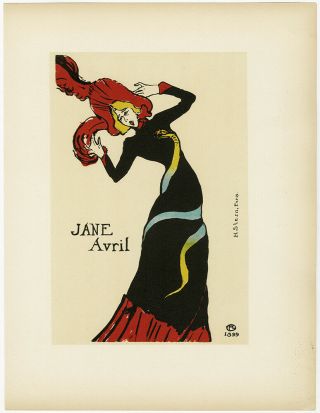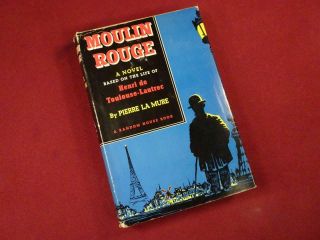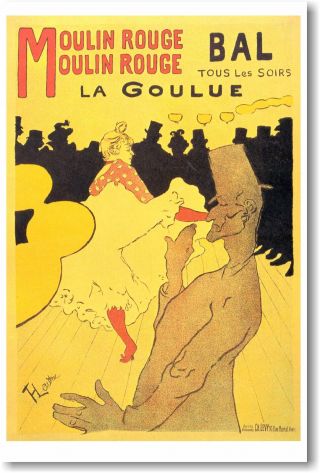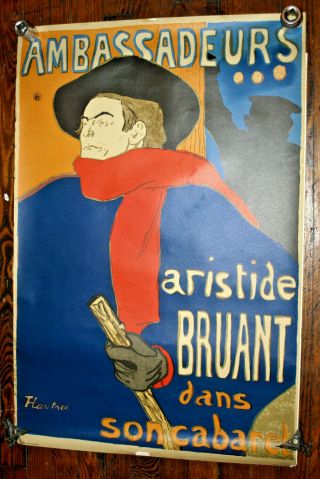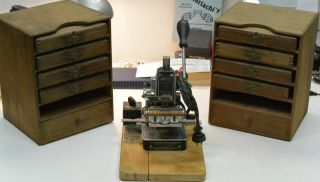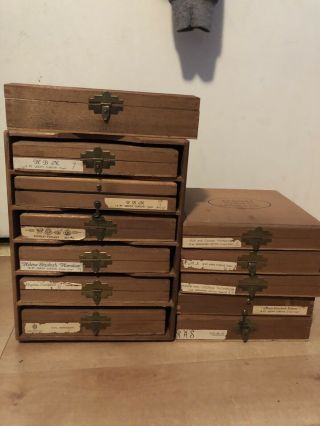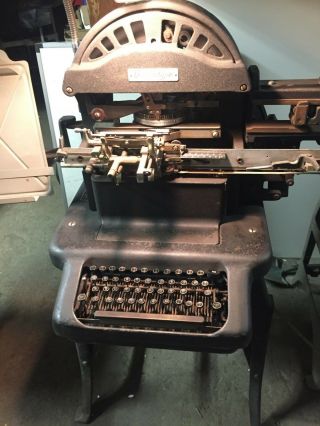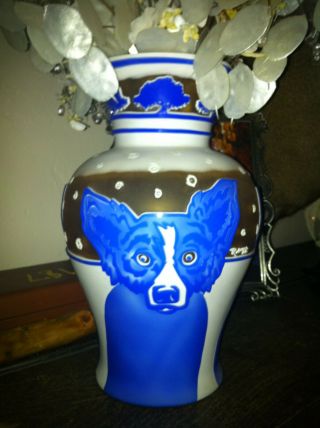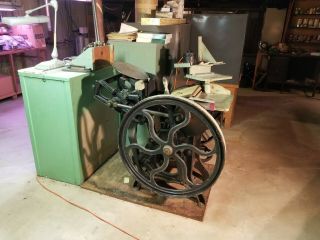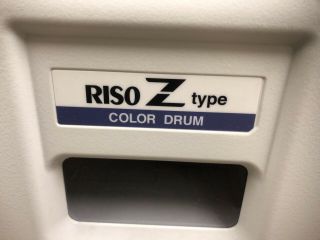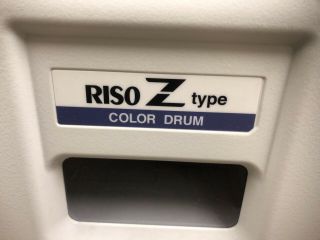Henri De Toulouse - Lautrec Vintage Confetti Belle Epoque Fine Art 1950 Mourlot
Item History & Price
Thanks to all our eBay bidders! We are honored to be your one-stop, 5-star source for vintage pin up, pulp magazines, original illustration art, decorative collectibles and ephemera with a wide and always changing assortment of antique and vintage items from the Victorian, Art Nouveau, Art Deco, and Mid-Century Modern eras. All items are 100% guaranteed to be original, vintage, and as described. Please feel free to contact us with any and all questions about the items and our p...olicies and please take a moment to peruse our other great eBay listings. All sell no reserve!
ITEM: This is a vintage fine art folio print created after the 1894 Henri de Toulouse-Lautrec poster "Confetti." Toulouse-Lautrec's large, colorful posters were a familiar sight in Paris in the 1890s and remain popular to this day as a symbol of the Belle Epoque. He took up lithography at a high point in its history, when technical advances in color printing and new possibilities for large scale led to a proliferation of posters as well as prints for the new bourgeois collector. In his short career, he created more than three hundred fifty prints and thirty posters, as well as lithographed theater programs and covers for books and sheet music, all of which brought his avant-garde visual language into a broad public arena. Whether advertising a product like the new paper form of confetti, Toulouse-Lautrec's posters were noteworthy for their highly simplified and abstracted designs. Inspired by Japanese woodblock prints, the artist incorporated diagonal perspectives, abrupt cropping, patterns of vivid, flat color, and sinuous lines to achieve an immediacy and directness that went far beyond the illustrative charm of other poster makers of the day. This vintage lithograph was produced in the early 1950s by legendary printer Fernand Mourlot of Imprimerie Mourlot Frères, Paris. The lithographs produced by Mourlot are miniature versions of some of Toulouse-Lautrec's finest lithographed posters from the turn of the 20th century. They are the most coveted of the miniature posters that exist today due to the lithographic processes used to create them and the artists of the Mourlot studio who produced them.
Measures 9.75" x 12.5"
CONDITION: Fine+ condition, as seen.
Guaranteed to be 100% vintage and original from Grapefruit Moon Gallery.
••••••••••••••••••••
Henri Marie Raymond de Toulouse-Lautrec-Monfa (24 November 1864 – 9 September 1901), also known as Henri de Toulouse-Lautrec (French: [ɑ̃ʁi də tuluz lotʁɛk]), was a French painter, printmaker, draughtsman, caricaturist, and illustrator whose immersion in the colourful and theatrical life of Paris in the late 19th century allowed him to produce a collection of enticing, elegant, and provocative images of the modern, sometimes decadent, affairs of those times.
Toulouse-Lautrec is among the best-known painters of the Post-Impressionist period, with Paul Cézanne, Vincent van Gogh, and Paul Gauguin.
In a 2005 auction at Christie's auction house, La Blanchisseuse, his early painting of a young laundress, sold for US$22.4 million and set a new record for the artist for a price at auction.
Henri Marie Raymond de Toulouse-Lautrec-Monfa was born at the Hôtel du Bosc in Albi, Tarn, in the Midi-Pyrénées region of France, the firstborn child of Alphonse Charles Comte de Toulouse-Lautrec-Monfa (1838–1913) and his wife Adèle Zoë Tapié de Celeyran (1841–1930). The last part of his name means he was a member of an aristocratic family (descendants of the Counts of Toulouse and Odet de Foix, Vicomte de Lautrec and the Viscounts of Montfa, a village and commune of the Tarn department of southern France, close to the cities of Castres and Toulouse). His younger brother was born in 1867, but died the following year. If he had outlived his father, Toulouse-Lautrec would have succeeded to the family title of Comte.
After the death of his brother, Toulouse-Lautrec's parents separated and a nanny eventually took care of him. At the age of eight, Toulouse-Lautrec went to live with his mother in Paris where he drew sketches and caricatures in his exercise workbooks. The family quickly realized that his talents lay in drawing and painting. A friend of his father, René Princeteau, visited sometimes to give informal lessons. Some of Toulouse-Lautrec's early paintings are of horses, a speciality of Princeteau, and a subject Lautrec revisited in his "Circus Paintings".
In 1875, Toulouse-Lautrec returned to Albi because his mother had concerns about his health. He took thermal baths at Amélie-les-Bains, and his mother consulted doctors in the hope of finding a way to improve her son's growth and development.
Toulouse-Lautrec's parents, the Comte and Comtesse, were first cousins (his grandmothers were sisters), and he had congenital health conditions sometimes attributed to a family history of inbreeding.
At the age of 13, Toulouse-Lautrec fractured his right femur. At 14, he fractured his left. The breaks did not heal properly. Modern physicians attribute this to an unknown genetic disorder, possibly pycnodysostosis (sometimes known as Toulouse-Lautrec Syndrome), or a variant disorder along the lines of osteopetrosis, achondroplasia, or osteogenesis imperfecta. Rickets aggravated by praecox virilism has also been suggested. Afterwards, his legs ceased to grow, so that as an adult he was extremely short (1.42 m or 4 ft 8 in). He developed an adult-sized torso, while retaining his child-sized legs. Additionally, he is reported to have had hypertrophied genitals.
Physically unable to participate in many activities enjoyed by males his age, Toulouse-Lautrec immersed himself in art. He became an important Post-Impressionist painter, art nouveau illustrator, and lithographer, and, through his works, recorded many details of the late-19th-century bohemian lifestyle in Paris. Toulouse-Lautrec contributed a number of illustrations to the magazine Le Rire during the mid-1890s.
After initially failing college entrance exams, he passed his second attempt and completed his studies.
During a stay in Nice, France, his progress in painting and drawing impressed Princeteau, who persuaded Toulouse-Lautrec's parents to let him return to Paris and study under the portrait painter Léon Bonnat. Toulouse-Lautrec's mother had high ambitions and, with the aim of her son becoming a fashionable and respected painter, used their family's influence to get him into Bonnat's studio. He was drawn to Montmartre, the area of Paris famous for its bohemian lifestyle and the haunt of artists, writers, and philosophers. Studying with Bonnat placed Toulouse-Lautrec in the heart of Montmartre, an area he rarely left over the next 20 years.
After Bonnat took a new job, Toulouse-Lautrec moved to the studio of Fernand Cormon in 1882 and studied for a further five years and established the group of friends he kept for the rest of his life. At this time he met Émile Bernard and Vincent van Gogh. Cormon, whose instruction was more relaxed than Bonnat's, allowed his pupils to roam Paris, looking for subjects to paint. During this period, Toulouse-Lautrec had his first encounter with a prostitute (reputedly sponsored by his friends), which led him to paint his first painting of a prostitute in Montmartre, a woman rumoured to be Marie-Charlet.
With his studies finished, in 1887 he participated in an exposition in Toulouse using the pseudonym "Tréclau", the verlan of the family name "Lautrec". He later exhibited in Paris with Van Gogh and Louis Anquetin. The Belgian critic Octave Maus invited him to present eleven pieces at the Vingt (the Twenties) exhibition in Brussels in February. Van Gogh's brother Theo bought Poudre de Riz (Rice Powder) for 150 francs for the Goupil & Cie gallery.
From 1889 until 1894, Toulouse-Lautrec took part in the Independent Artists' Salon (French: Société des Artistes Indépendants) on a regular basis. He made several landscapes of Montmartre. Tucked deep into Montmartre in the garden of Monsieur Pere Foret, Toulouse-Lautrec executed a series of pleasant plein-air paintings of Carmen Gaudin, the same red-headed model who appears in The Laundress (1888).
When the Moulin Rouge cabaret opened, Toulouse-Lautrec was commissioned to produce a series of posters. His mother had left Paris and, though he had a regular income from his family, making posters offered him a living of his own. Other artists looked down on the work, but he ignored them. The cabaret reserved a seat for him and displayed his paintings. Among the well-known works that he painted for the Moulin Rouge and other Parisian nightclubs are depictions of the singer Yvette Guilbert; the dancer Louise Weber, better known as La Goulue (The Glutton) who created the French can-can; and the much subtler dancer Jane Avril.
Henri de Toulouse-Lautrec's family were Anglophiles, and though he was not as fluent as he pretended to be, he spoke English well enough. He travelled to London where he was commissioned by the J. & E. Bella company to make a poster advertising their confetti (which was banned after the 1892 Mardi Gras)[18] and the bicycle advert La Chaîne Simpson.
While in London, he met and befriended Oscar Wilde. When Wilde faced imprisonment in Britain, Toulouse-Lautrec became a very vocal supporter of him and his portrait of Oscar Wilde was painted the same year as Wilde's trial.
Toulouse-Lautrec was mocked for his short stature and physical appearance, which led him to abuse alcohol.
He initially only drank beer and wine, but his tastes expanded into hard liquor, namely absinthe. The Earthquake cocktail (Tremblement de Terre) is attributed to Toulouse-Lautrec: a potent mixture containing half absinthe and half cognac in a wine goblet. Due to his underdeveloped legs, he walked with the aid of a cane, which he hollowed out and kept filled with liquor in order to ensure that he was never without alcohol.
In addition to his growing alcoholism, Toulouse-Lautrec also frequented prostitutes. He was fascinated by their lifestyle and the lifestyle of the "urban underclass" and incorporated those characters into his paintings. Fellow painter Édouard Vuillard later said that while Toulouse-Lautrec did engage in sex with prostitutes, "the real reasons for his behavior were moral ones ... Lautrec was too proud to submit to his lot, as a physical freak, an aristocrat cut off from his kind by his grotesque appearance. He found an affinity between his own condition and the moral penury of the prostitute."
A fine and hospitable cook, Toulouse-Lautrec built up a collection of favourite recipes – some original, some adapted – which were posthumously published by his friend and dealer Maurice Joyant as L'Art de la Cuisine. The book was republished in English translation in 1966 as The Art of Cuisine – a tribute to his inventive (and wide-ranging) cooking.
By February 1899, Toulouse-Lautrec's alcoholism began to take its toll and he collapsed from exhaustion and the effects of alcoholism. His family had him committed to Folie Saint-James, a sanatorium in Neuilly-sur-Seine for three months. While he was committed, he drew 39 circus portraits. After his release, he returned to the Paris studio for a time and then traveled throughout France. His physical and mental health began to decline rapidly owing to alcoholism and syphilis, which he reportedly contracted from Rosa La Rouge, a prostitute who was the subject of several of his paintings.
On 9 September 1901, at the age of 36, he died from complications due to alcoholism and syphilis at his mother's estate, Château Malromé in Saint-André-du-Bois. He is buried in Cimetière de Verdelais, Gironde, a few kilometres from the estate. His last words reportedly were "Le vieux con!" ("the old fool"), his goodbye to his father, though another version has been suggested, in which he used the word "hallali", a term used by huntsmen at the moment the hounds kill their prey: "Je savais, Papa, que vous ne manqueriez pas l'hallali" ("I knew, papa, that you wouldn't miss the death.").
After Toulouse-Lautrec's death, his mother, Adèle Comtesse de Toulouse-Lautrec-Monfa, and his art dealer, Maurice Joyant, continued promoting his artwork. His mother contributed funds for a museum to be created in Albi, his birthplace, to show his works. This Musée Toulouse-Lautrec owns the largest collection of his works.
– Wikipedia
••••••••••••••••••••



